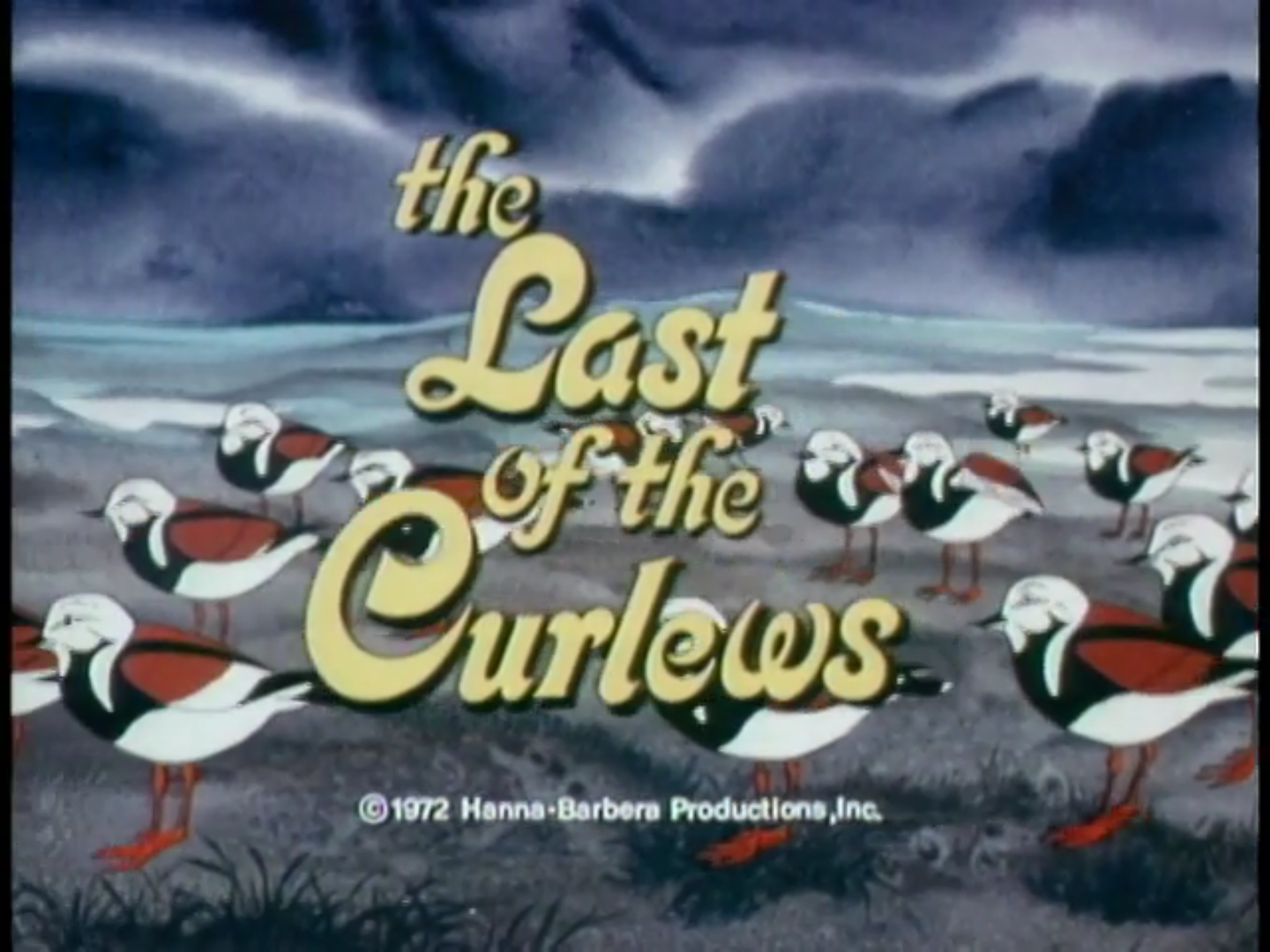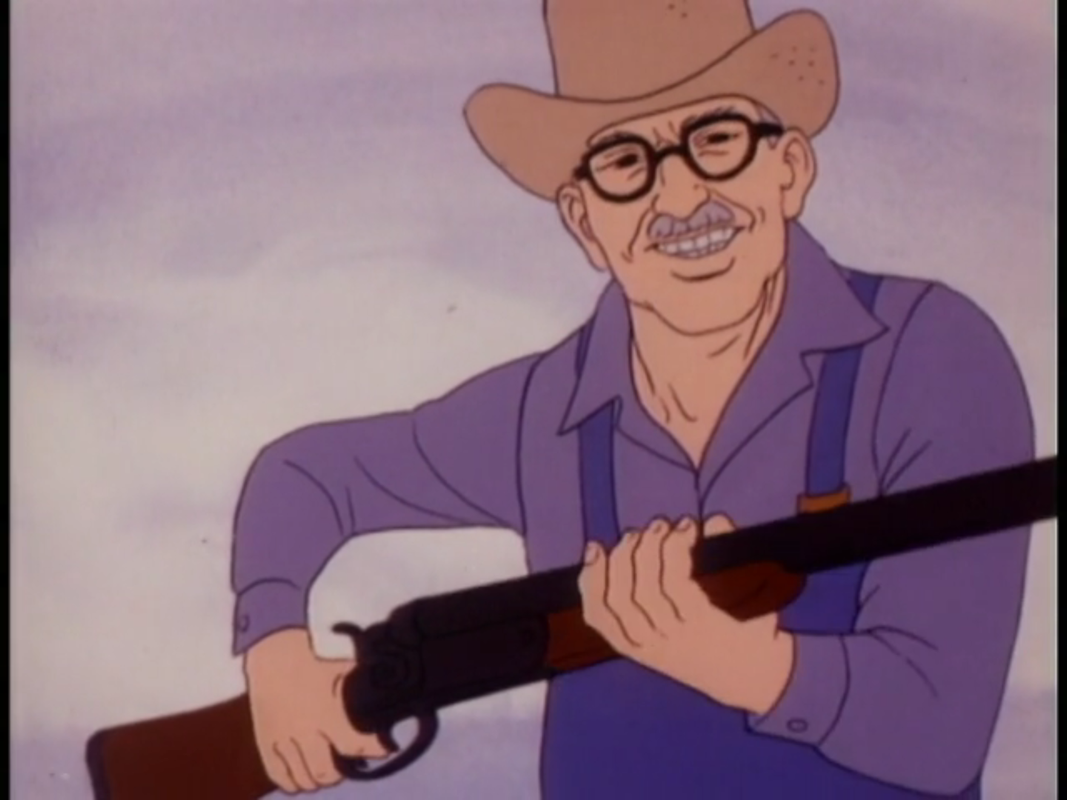This time on Afterschool Sessions: We look an ABC After School Special but not just any one, we are looking at the very first one. The Last of the Curlews. This special first aired on October 4, 1972 and begins the long run of the ABC After School Special series. "The Last of the Curlews" is based off the book of the same name by Fred Bodsworth. This special is also animated and that was done by Hanna-Barbera. For those that have read the past posts you'll find this won't be the only time either.
It starts in fall with where a father and his son named Mark are on hunting trip. There's a narrator , voiced by Lee Vines. The father and son hunters aren't the most important part of this special, they really aren't even main characters, they are a supporting role for the story itself. The special is presented as if it was a nature documentary in animation.
The story is told only by the narrator as he explains about a bird called the Eskimo Curlew. This bird is a lonely bird who only really to have a mate and some offspring. He resists as long as he can the trip that birds make in the autumn but eventually has to go. The bird finds himself eventually teamed up with some golden plover birds who seem to like him and they even let him lead them on the track to Venezuela.
Hey I'm the last of my kind/ Copyright Hanna-Barbera
The special really has the animation do most of the work, beyond the narrator. As the story wants you to understand the bird as a character. The bird is presented to give the humans a way to understand and connect to him. He's lonely seeking out someone of his own kind to be with and continues to hope for that. There's a sense of warmth in this special, but also unease. Nothing in here is sugar coated either. The story tells of how the Curlews used to be plentiful and the were over hunted to near extinction. Death is not avoided in this special as we saw a hunter kill a buck earlier -not the hunter father and son , more on them later- and on the trip many of the plovers die by nature's hand.
The original story was published in 1954, again written by Canadian reporter, Fred Bodsworth. The book itself presents the journey of the curlew the same way giving it some human characterization to better connect with the audience. The curlew is a real or was, that's the hard part. The story in the special is true where the bird was over hunted to near death in the late 19th century. The last confirmed sightings of the bird were in the 1962 where a photo of it comes from. And 1963 where they found a body. Possibly, but unconfirmed reports of any after that. Currently, its status is critically endangered, which the one step before any type of extinction. Also, hence the title.
The special does end up showing a lady curlew and she doesn't become more part of the story until the last third of it where she and him actually meet up. It shows their struggles as their journey back up north. Yeah, we do pass through the seasons in this. Sadly, there's not a happy story in this as the female curlew ends up getting shot by a farmer on their way back. Eventually, the boy finds the bird as sees that she has died, with the male curlew flying off and the narration saying soon there will be none.
Going back to the hunter and son. There's a careful writing here the special doesn't present the father as overzealous, mean, or wanting to kill for killing. He tells his son that they hunt responsibly, don't do things illegally, shoot things they aren't supposed to, and that it's fine because nature does it too. It doesn't go hunting is evil and bad and should be banned. I like that it has the nuance it wants to bring its [young] audience. It shows that there was hunting that was done wrongly and un reigned in caused an essential extinction. Mark, the boy, also seems a little apprehensive of the whole idea, and he finds the bird too. Also have to mention that that Wikipedia description, as of this writing, is wrong the hunter and son they really don't debate killing a curlew, the only times they bring up the bird is when the boy sees it and points out that it's flying alone and thinks that it might be alone, and the dad [wrongly] thinking that it's sick and/or old or a straggler. They never mention the idea of shooting it. They didn't even end up killing a curlew that was a farmer.
In the way its presented it's done well to bring in facts, but also present a fictional journey of a bird using realism. The story has warmth to it with happy moments ,but there is always background feeling of unease and a sense of danger. How it mentions why the curlew is alone, and deaths of animals is to show that there a sense of death being present in the background and impactful.
It's well animated with the backgrounds being watercolor. It also does mostly realistic drawn animals, something different for Hanna-Barbera. The music is well scored and I think the most memorable will probably be Once on Golden Wings song , I'm not sure what the real name is but it's a very somber and fittingly played. As mentioned earlier, there's a very strong nature doc feel to present a story where we get gulfed and see birds in realistic motion and actions. The animation makes it feel almost like an illustrated book. This one sets an interesting tone for what ABC After School Specials would be, which varied. This one was somewhat educational but not heavily blatant, it has a social message , and yet it doesn't over explain or over force itself to be something to its viewers. It's a good special with the impact it brings and a well done story with a somber note that makes one think.
That's it for now, tune in next time when we wonder why the birds just took that route.






No comments:
Post a Comment